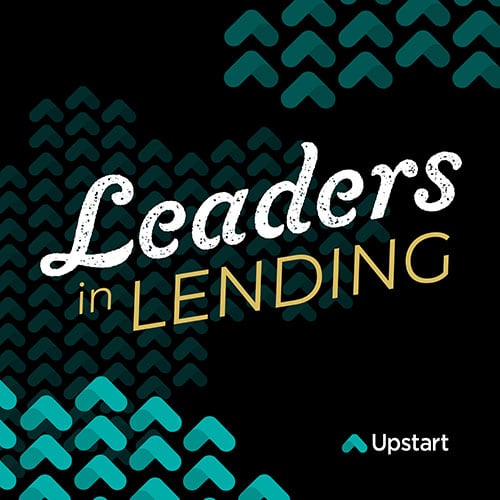Leaders in Lending | Ep. 135
Where Corporate Growth and Community Impact Collide
This week, our host Barry Roach is joined by Nathan Cox, CEO of In Roads Credit Union, to discuss his transition from banking to the world of credit unions, as well as the stakeholder-focused culture and societal impact of credit unions.


GUEST SPEAKER
Nathan Cox

ABOUT
InRoads Credit Union
InRoads Credit Union is full-service, not-for-profit financial institution. Anyone who lives, works, worships, volunteers, or attends school in Columbia, Clatsop, Cowlitz, Multnomah, and Washington Counties are eligible to join. Founded in 1938, InRoads is proud to be celebrating more than 75 years of serving its members.
Key Topics Covered
- The importance of involving employees in decision-making
- Why organizations should prioritize member experience and stakeholder value over shareholder growth
- The relationship between financial literacy and economic development

“For me, it's integrating a fail forward, fail fast mindset because I want people to take risks, so that way we can grow the company.”


“There's a direct correlation between the strength of someone's financial health and the strength of their mental or physical health.”
EPISODE RECAP & SUMMARY
You can’t drive a car by pressing both pedals at once, and it doesn’t work if you only use one pedal and not the other — you need both to drive safely and effectively.
In the business world, that means you have to have one foot in the present and one in the future if you want to successfully navigate transitions and transformations without losing core cultural company values.
Nathan Cox, CEO of InRoads Credit Union, learned that fact as he stepped into the role of CEO this past year. Knowing when to lean into the future and when to center himself in the present has been instrumental in his mission of digital transformation and impact.
Cox’s “fail forward, fail fast” mentality continues to seep through the board at InRoads and lend to positive results. When operations are built on transparency and trust, growth and community impact come second nature.
Where does that influence start, and how does the power of transparency trickle down through a company?
Three keys to building a strong relationship with your board
It’s not a secret that you need a strong relationship with your board in the credit union space, and for that to happen, there are three key ingredients:
- Transparency
- Accountability
- Partnership
Just like you can’t drive a car by pressing both pedals at once, you can’t get a car going without the proper type of gasoline, and you can’t build a relationship — of any kind — without trust. Trust drives relationships.
“When I first started having my monthly one-on-one with the board chair, I said, ‘Look, there's one rule we're going to have that’s non-negotiable, and it's called no surprises. You don't surprise me, and I don't surprise you,’” Cox said.
Transparency and accountability go hand-in-hand and, together, lead to a stronger partnership, no matter how uncomfortable those characteristics can be at times.
That said, these practices are not isolated to board/leadership partnerships — true change is often carried by the workforce.
The benefits of involving employees in decision-making
You can’t drive a car without the wheels, and if trust is the gasoline, employee buy-in is the tires. You won’t get far without company-wide engagement and investment.
Cox knew this to be true as he stepped in as CEO, and one of his first moves was to bring executive-level decisions to different departments.
“We did the listening tour — for 90 days, all we did was visit every department, every division, and we took notes and put everything together,” he said. “I realized we have really, really good people, and we empowered them to make decisions.”
By making that move, he’s gained increased engagement, exciting ideas and a more cohesive structure built from intentional listening, followed by immediate action.
“The executive team can't do everything to change a company — it's going to take the entire company to move the needle and help transform to where we need to be,” he said. “We're getting some phenomenal ideas from the staff, and they are always there, we just never solicited them before.”
One way Cox walks the talk on the planes of partnership and transparency is, once a quarter, working at a branch of InRoads as a greeter, front desk personnel or any other front-facing role to display the type of mindset he expects across all departments.
“When the members come in, I greet them, and then during the conversation, let them know I'm the CEO, and there's nothing that can't be done that I won't do,” Cox said.
Leading by example is one of the most powerful ways a leader can show up, if not the most important, and Cox aims to make that a core part of his process.
“If I can impart that mentality in the company, then the other employees will also say, ‘He's willing to make sales calls, he's willing to solve problems with the members, then I can do that as well,’ really trying to empower and engage the entire company to move us forward.”
Part of these initiatives means contributing to the community in a meaningful and relevant way to further expand company impact — company growth is only as powerful as how it affects the people it serves.
How community impact drives company growth
What is a car without an engine, and what is a credit union without its members? Both sit dead in the water without those critical components.
Serving members is more than providing a space where they can manage their finances — it’s developing systems that positively impact their lives long after they’ve stepped out of the building.
“We’re driven by community involvement and community impact. And if you look at the data — no matter what the source — you'll see there's a direct correlation between the strength of someone's financial health and the strength of their mental or physical health,” Cox said. “If their financial health is not strong, that stress impacts their mental health, and that mental health impacts their physical health.”
How many of us have felt the impact of finance-based stress? Odds are, we all have one way or another. The ripple effect of those pressures can be crippling.
“We have great programs for middle schools and high schools to help them learn about budgeting and what we call Financial Reality Fair, and then doing the same thing for small business owners,” Cox said.
By default, credit unions tend to serve many underserved or underrepresented communities, and those communities — generally — do not have financial equity.
Making investments for increasing financial literacy is one of the most straightforward ways for a credit union to impact a community in real and long-lasting ways.
“That's where we're changing lives and leaving a legacy at InRoads, and the company's completely bought off on that,” he said. “We're going to continue to execute that strategy going forward.”
True transformation doesn’t only pertain to digital landscapes. It must encompass the bigger picture through transparency, accountability and partnership at an executive, employee and community level.
Stay tuned for new episodes every week on the Leaders in Lending Podcast.




